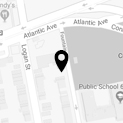Why? The Answer is In The Play
By Associate Director, Courtney O’Connor
Whenever I tell people about our epic project, they generally stare at me for a few seconds after they learn that the total running time for The Life and Adventures of Nicholas Nickleby will be about 6 ½ hours, in two parts of just over 3 hours each. This is generally followed by 2 questions: “Are you crazy?” and “Why?”
The answer to the first question, “Are you crazy?” is easy – yes, although that has very little to do with this production, frankly. The second question, “Why?” is much more complex.
This past March, Producing Artistic Director Spiro Veloudos and I sat down for coffee, and he laid out his vision for directing this piece. It was clear that this has long been a dream of his. He initially had conversations about producing …Nicholas Nicklebywhen he was the Artistic Director at The Publick Theatre, before the script had been trimmed to its current, abridged length from the original 9 hours. For some twenty years, this story and this play have been stewing and ruminating in Spiro’s mind and creative energy. Even as a big fan of the process of working on a piece, I must say – that’s a long time.
As Spiro and I delved into and spoke about the play, another aspect became clear. This show is big. Let’s just look at the numbers for a moment, shall we?
2 parts
3.25 hours each
6.5 hours total
5 weeks rehearsal
9 weeks performance
25 actors
150+ roles
1000+ costume pieces
And we’ve only just begun. So why on earth would someone undertake this when we are in some of the worst economic times in recent memory?
The answer, dear readers, is in the play. As they do in much of Dickens’ work, money and class run at the very core of …Nicholas Nickleby. It is easy to see Ralph Nickleby as an extension of Ebenezer Scrooge, but the exploration of the effect of money goes much deeper than that. Who has it, who doesn’t, who’s trying to get it, and how. What are the consequences of each of those situations? The juxtaposition between the wealthy and the poor seem to be more central and more present than in some of Dickens’ other writings.
In his book, The Nicholas Nickleby Story, Leon Rubin (Associate Director of the Royal Shakespeare Company production) recounts the experience the company had with the creation of this piece. He tells how to one point in the process, adaptor David Edgar was “challenged by Trevor (Nunn) to say what he thought Nicholas Nickleby was really about. He replied, ‘Money’.”
And indeed, we only have to look to the opening scene of the play to realize just how clearly Edgar allowed this thread to pull through the script. A mere 45 seconds into the play, the following lines appear:
But a mania prevailed,
A bubble burst,
Four hundred stockbrokers took villa residences at Florence.
Four hundred nobodies were ruined,
Sound familiar?
So the question of “Why” is answered as it is for all plays and musicals at The Lyric: To entertain, to challenge, and to provoke our audiences. As with any play, the strength of the story is in how we relate to it. Though the events take place in 1830’s England, parallels to our contemporary world are clear. Thoughts and concerns of money, family, and morals are everywhere – just as they were 180 years ago.

